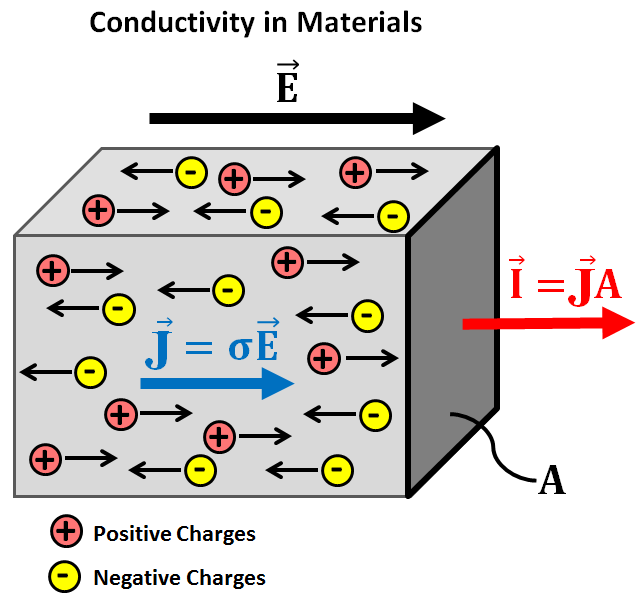Physical properties of materials This section introduces the meaning of each of the following physical properties and, where applicable, their units of measurement. It is likely that the teaching of this and the first topic (Mechanical properties of materials) will overlap. The physical properties of several common solid waste materials including poultry manure and compost were quantified under a variety of management practices and programs. Physical Properties: Physical properties can be observed or measured without changing the composition of matter. Physical properties are used to observe and describe matter. Physical properties include: appearance, texture, color, odor, melting point, boiling point, density, solubility, polarity, and. Materials scientists learn about these mechanical properties by testing materials. Results from the tests depend on the size and shape of material to be tested (specimen), how it is held, and the way of performing the test. KS2 Science Materials learning resources for adults, children, parents and teachers. Mechanical and physical properties. To provide the right environment for further growth of this range of materials it was necessary to research existing and potential applications, to provide a technical introduction to the material and testimonials from existing producers who have used the material and can talk with authority about its. Groover, Fundamentals of Modern Manufacturing 2e Physical Properties Defined Properties that define the behavior of materials in 33. 4 OPTICAL AND PHYSICAL PROPERTIES OF MATERIALS properties, and cost and ease of manufacture dictate the number of readily available materials for any application. In practice, glasses dominate the available optical materials for several important reasons. Physical Properties of Building Materials These are the properties required to estimate the quality and condition of the material without any external force. Physical Material Properties and general information cast iron, steel, alloy steel, tool steel, stainless steel, . Material Properties Reference for steel, cast iron, aluminum, composite materials, ceramics and more. This site is a large engineering and manufacturing reference directory for mechanical designers. Includes engineering data tables, material info, manufacturing methods, design. Physical properties materials testing and measurement. Physical properties testing expertise includes key physical property characteristics for a wide range of materials. Physical properties test measurements are conducted for chemicals, polymers and plastics, consumer products, food, petroleum, fuels and other refined fuels, pharmaceuticals. Designed for advanced undergraduate students, Physical Properties of Materials, Second Edition establishes the principles that control the optical, thermal, electronic, and mechanical properties of materials. Using an atomic and molecular approach, this introduction to materials science offers students a wideranging survey of the. Thermal properties come under the broader topic of physical properties of materials. Thermal properties of a material decides how it reacts when it is subjected to heat fluctuation (excessive heat or very low heat, for example). All properties of matter are either physical or chemical properties and physical properties are either intensive or extensive. Extensive properties, such as mass and volume, depend on. a) Functional properties: The correct combination of mechanical, physical and chemical properties to meet the function and operating conditions of the component. b) Manufacturing properties: Processing or fabrication properties of the material for the conversion processes needed to convert the material into required shape, such as ease of. Physical and Chemical Properties. Physical properties are those that can be observed without changing the identity of the substance. The general properties of matter such as color, density, hardness, are examples of physical properties. This feature is not available right now. MATERIALS PHYSICAL PROPERTIES AND TESTS Assist. Catalin BADEA POLITEHNICA University of Timisoara To finalize the material for an engineering product or application, we should have the knowledge of physical properties of materials. The physical properties of a material are those which can be observed without any change of the identity of material. Examples of physical properties include color, molecular weight and volume. A chemical property may only be observed by changing the chemical identity of a substance. In other words, the only way to observe a chemical property is by performing a chemical reaction. A physical property is any property that is measurable, whose value describes a state of a physical system. The changes in the physical properties of a system can be used to describe its changes between momentary states. A physical property is any property of matter or energy that can be measured. It is an attribute of matter that can be observed or perceived. Absorption of The way a photon's energy is taken up by matter; Absorption (physical). The lessons cover: how materials are made, identifying different materials, natural v. manmade materials, the properties of materials, recycling materials and the suitability of materials for purpose. Physical Properties of Materials for Engineers, Second Edition is an excellent introduction to solid state physics and practical techniques for students and workers in aerospace industry, chemical engineering, civil engineering, electrical engineering, industrial engineering, materials science, and mechanical and metallurgical engineering. Physical properties of materials A listing of selected online and print resources for research in the physical properties of materials. The Swain Chemistry and Chemical Engineering Library has the most print resources, but there are many online options as well. IntroductionData on physical properties of agrofood materials are valuable because: (i) they are needed as input to models predicting the quality and behaviour of produce in preharvest, harvest and postharvest situations. Designed for advanced undergraduate students, Physical Properties of Materials, Second Edition establishes the principles that control the optical, thermal, electronic, and mechanical properties of materials. Properties of Engineering Materials PHYSICAL PROPERTIES Specific Gravity defined as the weight of a given volume of a material as compared to the wt of an given volume of water it is measured at atemperature of 60 deg F(15. 5 deg C) Designed for advanced undergraduate students, Physical Properties of Materials, Second Edition establishes the principles that control the optical, thermal, electronic, and mechanical properties of materials. Using an atomic and molecular approach, this introduction to materials science. In this review, we provide a comprehensive overview of the fabrication of 2D materials based on epitaxial growth in an ultrahigh vacuum (UHV) experimental environment and the investigation of their physical and chemical properties. Materials Science has now become established as a discipline in its own right as well as being of increasing importance in the fields of Physics, Chemistry and Engineering. To the student meeting this Abstract. In this review, the physical properties of composite materials are discussed; however, discussion of the mechanical properties has been excluded except when necessary for the consideration of properties such as thermal expansion or swelling and shrinkage. THE PROPERTIES OF MATERIALS and their everyday uses Children need to have experience of, and explore as many different materials (substances) as possible in order to make sense of their world. Understanding how materials behave in their natural state and under. Many properties, such as melting point, boiling point, thermal conductivity and electrical conductivity of materials are governed by atomic bonding of materials. Hence, to understand the properties of materials, it is very important to study the atomic bonding of materials. In this completely revised and updated third edition, Mary Anne White presents a thorough background to understand physical properties of materials from an atomiclevel perspective. New aspects in the third edition include learning objectives for each chapter and a glossary of more than 500 terms, along with the information on the newest discoveries in materials science. Chemical and physical properties are related to chemical and physical changes. A physical change only alters the shape or appearance of a sample and not its chemical identity. A chemical change is a chemical reaction, which rearranges a sample on a molecular level. Paper Testing Physical Properties Smithers Pira performs a wide range of physical tests on paper materials, in accordance with various International Standards. At Smithers Pira we are expert in testing the physical properties of paper to specific standard requirements. Rent and save from the world's largest eBookstore. Read, highlight, and take notes, across web, tablet, and phone. MANUFACTURING PROPERTIES of ENGINEERING MATERIALS 2007. AHMET ARAN MFG PROP V1 1 CONTENTS 1. Engineering Materials and Their Properties 1. Classification of Engineering Materials 1. Properties of Engineering Materials physical and chemical. The physical properties can also be further grouped into categories: mechanical, thermal. The choice of material will depend upon the properties needed by the product. For example, the enclosure for an outside alarm will need to be waterproof. PHYSICAL PROPERTIES OF BUILDING MATERIALS Mohammad Naser Rozy 3rd year Department of Civil Engineering NIT Rourkela Slideshare uses cookies to improve functionality and performance, and to provide you with relevant advertising. The combination of these properties together with a saturation induction of 1. 2 T and favorable thermal properties, result iin VITROPERM being a stateoftheart material. This alloy is equal or superior to ferrites, permalloys and amorphous materials based on cobalt. Having the ability to distinguish physical properties from chemical properties is indeed a good beginning in the study of materials. The Challenger disaster is due to a human failure to recognize the limitation of the property of oring material. Jump to navigation Jump to search. A material's property (or material property) is an intensive property of some material, i. a physical property that does not depend on the amount of the material. To select greener materials you need to consider the materials environmental, cost, and performance impacts on your design. A materials performance depends on its physical properties, and optimizing this is the most important way to reduce your products environmental impact. Click here to see how to enter your company's materials into MatWeb. We have over 125, 000 materials in our database, and we are continually adding to that total to provide you with the most comprehensive free source of material property data on the web. Choosing the right material is a complex and difficult task with physical, aesthetic, mechanical and appropriate properties to consider. Environmental, moral and ethical issues surrounding choice of materials for use in any product, service or system also need to be considered. Physical Properties of Materials, Choosing Green Materials Duration: The Physical Properties and Chemical Properties of Matter Duration: 5: 43..











